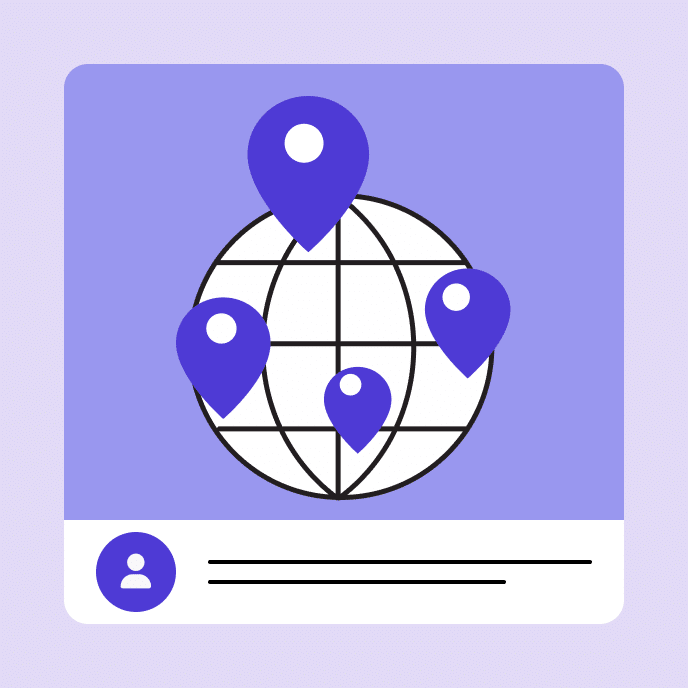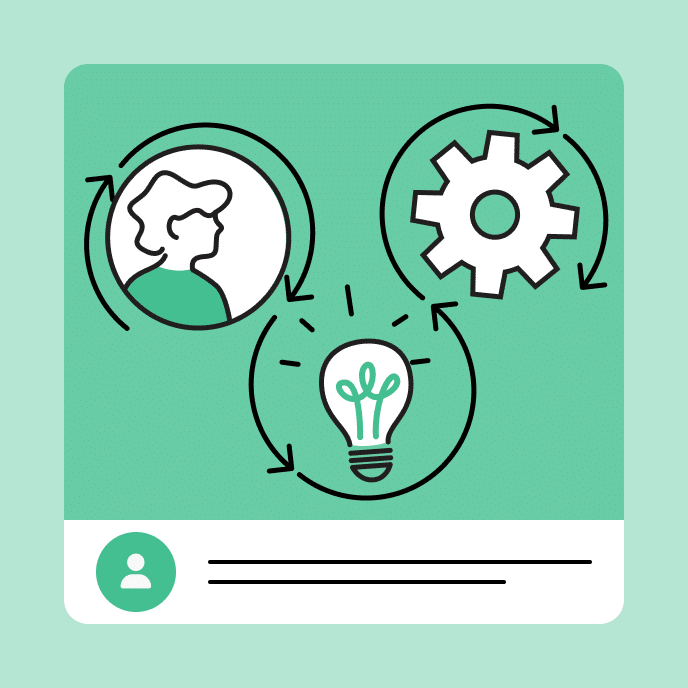What Is E-Upskilling?
Explore how to create effective employee upskilling programs that boost workforce skills and drive company growth.

Introduction: The upskilling upswing
Skill development opportunities in the workplace have enormous potential to open doors. Organizations that can foster skill building successfully have an opportunity to boost their bottom lines and increase efficiency, while employees benefit from greater career development and job satisfaction.
According to the World Economic forum, the broad investment in reskilling and upskilling today has the potential to boost GDP by $6.5 trillion by 2030. And around the world and across industries, leaders are responding accordingly. Research shows that 9 out of 10 global executives plan to either increase or keep steady their investment in L&D, including upskilling and reskilling.
Looking to learn more about employee upskilling and its transformative powers for both sides of a business? In this article, discover everything you need to know about upskilling effectively, including best practices to build the most valuable upskilling program for both your business and employees.
What is upskilling?
Upskilling is a form of workplace training where employees learn new skills that directly relate to their current role. Upskilling opportunities can be used for everything from technical skills like SEO writing to soft skills like public speaking or leadership skills. They can be conducted in person, online, or via a hybrid approach, and may take the form of a formal mentorship program, on the job training, or independent online study.
Reskilling vs. upskilling
Upskilling is closely related to reskilling, a similar strategy for skill development with key differences. While upskilling involves training employees on skills related to their current role, reskilling involves training employees on additional skills related to a different role.
Both types of training programs can facilitate career changes. However, reskilling is typically better suited for employees looking to change career paths, while upskilling is a better fit for employees looking to grow in their current career path.
Both reskilling and upskilling are important tactics for building employee retention while allowing a company to fill skill gaps. For the strongest possible workplace learning program, the two strategies should be used in tandem to offer the broadest range of development opportunities for employees.
The role of e-learning in upskilling

As the global e-learning market continues to grow, offering online opportunities for upskilling becomes increasingly important. Whether your business operates in person, remote-only, or in a hybrid capacity, e-learning allows you to increase the flexibility and accessibility of your upskilling program.
By offering online opportunities for skill development, upskilling can fit into employees’ day-to-day routines more seamlessly. Even if they’re working across time zones or are deskless workers, employees can complete lessons at their own pace, leading to greater participation and completion rates.
E-learning can also increase the accessibility of upskilling opportunities for learners. Employees with disabilities can benefit from e-learning features like screen readers or closed captioning, increasing knowledge retention and participation rates.
4 key benefits of upskilling
Building new or advanced skills has a transformative power for all parties involved—both the business and the participating employee. Below, learn more about four of the primary benefits of upskilling for both employers and employees.
1. Upskilling reduces workplace skills gaps
Upskilling is a powerful way to reduce skills gaps in the workplace. Rather than filling employee skills gaps with contractors or new hires, you can harness existing employee talent. Deepening employees’ existing skill set with relevant courses or other training opportunities can fulfill crucial organizational needs. This not only offsets hiring costs, but also increases output and employee satisfaction.
2. Upskilling boosts employee retention
In today’s competitive job market, demonstrating career growth is essential for workers. Upskilling empowers employees with career development opportunities. These can increase job satisfaction, give workers a sense of agency over their professional growth, and increase employee retention rates.
In fact, research shows that when workplaces lack these opportunities, retention is at risk. A recent study commissioned by Amazon found that roughly two-thirds of employees may leave their employer within the next year because of a lack of opportunities for skill development.
By offering these types of career development opportunities, companies don’t just offset hiring costs—they foster a culture of continuous learning. This demonstrates that the organization is invested in employees’ career growth, improving morale and employee loyalty.
3. Upskilling drives productivity and company growth
Employees with enhanced skills and deeper knowledge in their field can improve organizational productivity and boost overall company growth. According to LinkedIn’s 2024 Workplace Learning Report, 40% of organizations offer mature career development initiatives that yield positive business results. Of these companies, 68% provide online learning programs.
4. Upskilling with e-learning can increase flexibility and accessibility

Upskilling efforts created with e-learning can provide both learners and instructors with greater flexibility over the training experience. Workers can complete online courses at their own pace, from any location, and on any schedule. This can increase employee engagement, participation, and course completion rates.
Online upskilling opportunities can also increase accessibility for learners with disabilities and those with different learning styles. This allows more learners to get more value out of the training, increasing productivity and efficiency.
6 strategies to create successful upskilling programs
To create an upskilling program that drives real organizational results, follow the best practices below.
1. Consult subject matter experts (SMEs)

To inform your upskilling strategy, and develop upskilling content, it’s key to consult subject matter experts (SMEs) across your organization. These individuals can help identify skills gaps to fill, map out learning opportunities, and create upskilling courses that align with company goals. If you’re building custom online upskilling courses, your SMEs may be able to create upskilling courses directly via your e-learning platform depending on its ease of use.
2. Incorporate interactive elements
Whether you’re educating employees in the office, online, or a combination of the two, interactivity is crucial for employee learning. Activities like small group discussions, gamified knowledge checks, and discussion boards can help employees interact with the lesson material and each other, leading to better learning experiences and increased knowledge retention.
3. Leverage scenario-based learning
Scenario-based learning allows learners to practice their new skills in a low-risk environment. This type of active learning makes learners involved participants in the lesson material.
Typically, scenario-based learning presents the learner with a challenge, offers several choices for them to respond to, and provides feedback on the choice made. Engaging with course content in this way can lead to greater focus and knowledge retention, improving the success of the course.
4. Leverage the right software solutions

If your upskilling program utilizes exclusively online or blended learning, the right software tools can help you streamline the process and make your courses more engaging and effective. Typically, e-learning solutions fall into two main categories: course authoring tools and course distribution tools.
Course authoring tools
Also known as course creation apps, these software solutions streamline the process of building online courses. One key advantage of these apps is that they enable course creators to add interactive elements like assessments and games to their courses, which may lead to better knowledge retention. Tools like Storyline and Rise allow you to easily and quickly build these course elements, cutting down on development time and enabling creators of all experience levels to participate in the course creation process.
Course distribution tools
Course distribution tools, like learning management systems (LMSs), are separate from course authoring tools. They ensure your courses reach your target audience and often allow you to track learner data. They can also allow you to manage your learning audience, limiting courses to certain groups or making them private. Consider an LMS like Reach that prioritizes speed while offering built-in analytics so you can see how learners are responding to your content and improve it over time.
5. Use AI to offload time-consuming tasks
Artificial intelligence (AI) tools can offer a variety of benefits for e-learning course creators. In particular, these tools can dramatically increase the speed of creating and reviewing courses by cutting back on the more time-consuming manual tasks of e-learning content creation.
Consider AI tools that are built specifically for e-learning to generate higher quality, more relevant content while streamlining the number of AI tools you use. For example, Articulate’s AI Assistant allows you to quickly convert a block of text into an interactive element, like a sorting activity, for increased learner engagement.
6. Measure success, solicit feedback, and make improvements
To measure how well your workplace training is working and how it can be improved, regularly track key data about your upskilling program. Because e-learning content is hosted online, this format offers built-in opportunities for tracking key performance indicators (KPIs) like assessment scores and course completion rates.
It’s also important to balance data with qualitative feedback, from both managers and direct reports. Regularly consulting workers about their experience with upskilling courses can help you identify trends in pain points and areas for improvement so you can make adjustments as needed. This can also help you pinpoint the skills employees value the most so you can create new upskilling courses to address them.
Upskilling in action: The Dead Rabbit’s whiskey education program
Effective upskilling programs have the power to transform employees’ lives and improve business outcomes for companies. The Dead Rabbit’s upskilling program is a prime example of this.
The renowned craft cocktail bar prioritizes employee education, constantly expanding skill-building opportunities for staff. Irish whiskey is a key product for The Dead Rabbit, making it a critical educational focus. To tackle this, the company revamped an optional program around whiskey education for staff.
Using e-learning, they broke up the robust course content into four modules on topics including history and production methods. They combined multiple assessment methods to ensure that learners could effectively apply their knowledge upon completion of the course, including an in-person tasting element to supplement the online coursework. Those who do pass receive benefits including an increase in hourly pay and a fully-expensed, five-day trip to Ireland to learn more about the distilling industry.
Through this upskilling program, The Dead Rabbit offers exciting career development opportunities for staff members, all while strengthening the company’s mission and improving service for guests.
Engage employees, boost productivity, and increase retention with upskilling
Upskilling programs are a win-win for both employees and companies. When employees are given a chance to grow in their roles and feel supported by their employer, both the individual and the organization benefit.
By creating opportunities for workers to deepen their skills, encouraging employees to take advantage of these learning opportunities, and honing your offerings over time, you can maximize the value of your upskilling program. This intentional learning process has the power to strengthen organizational culture, boost brand reputation, and improve your bottom line.
You may also like

6 E-Learning Localization Strategies for Workplace Training
Explore tips on localizing e-learning course content, multimedia, navigation, and more to deliver more impactful global workplace training.

